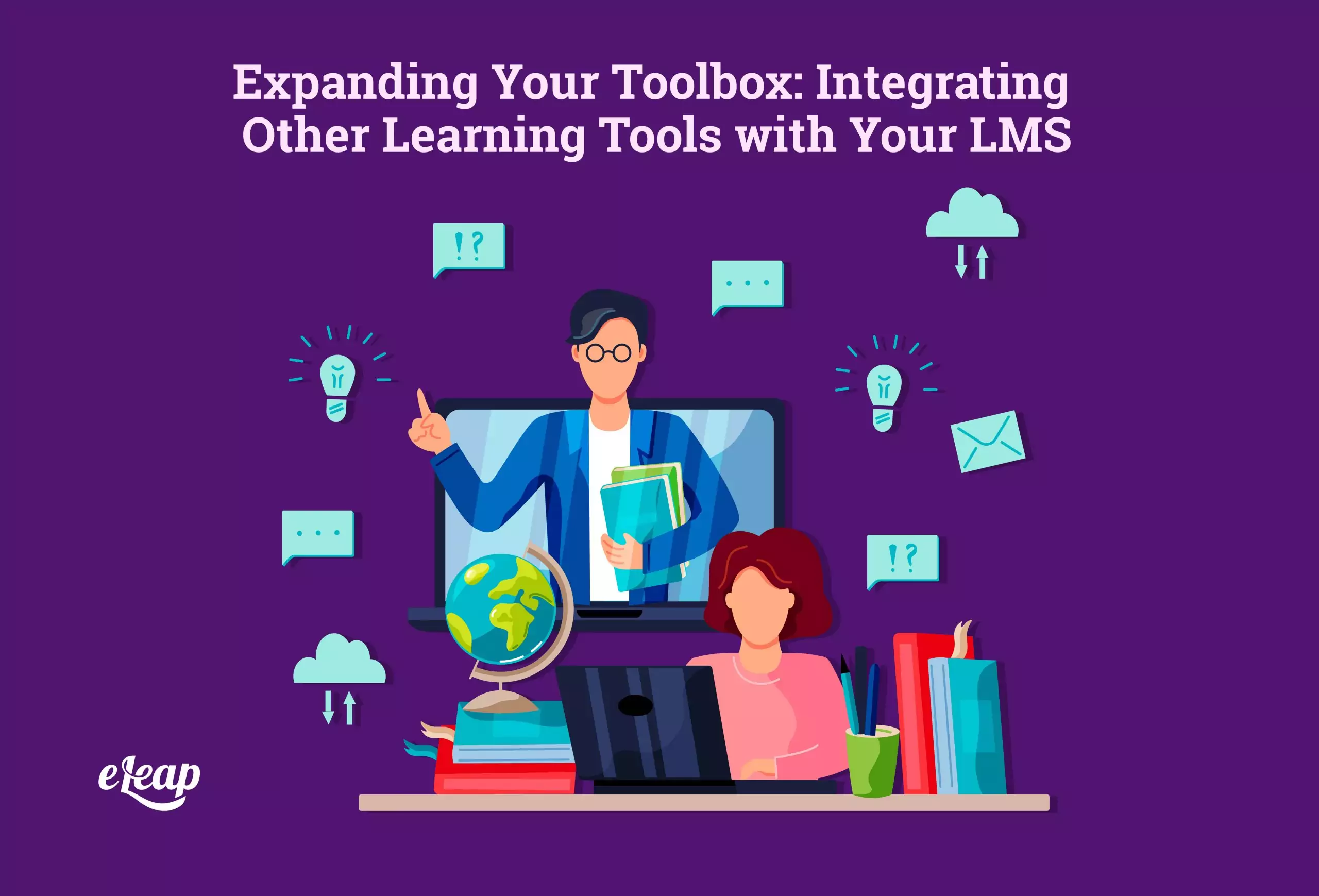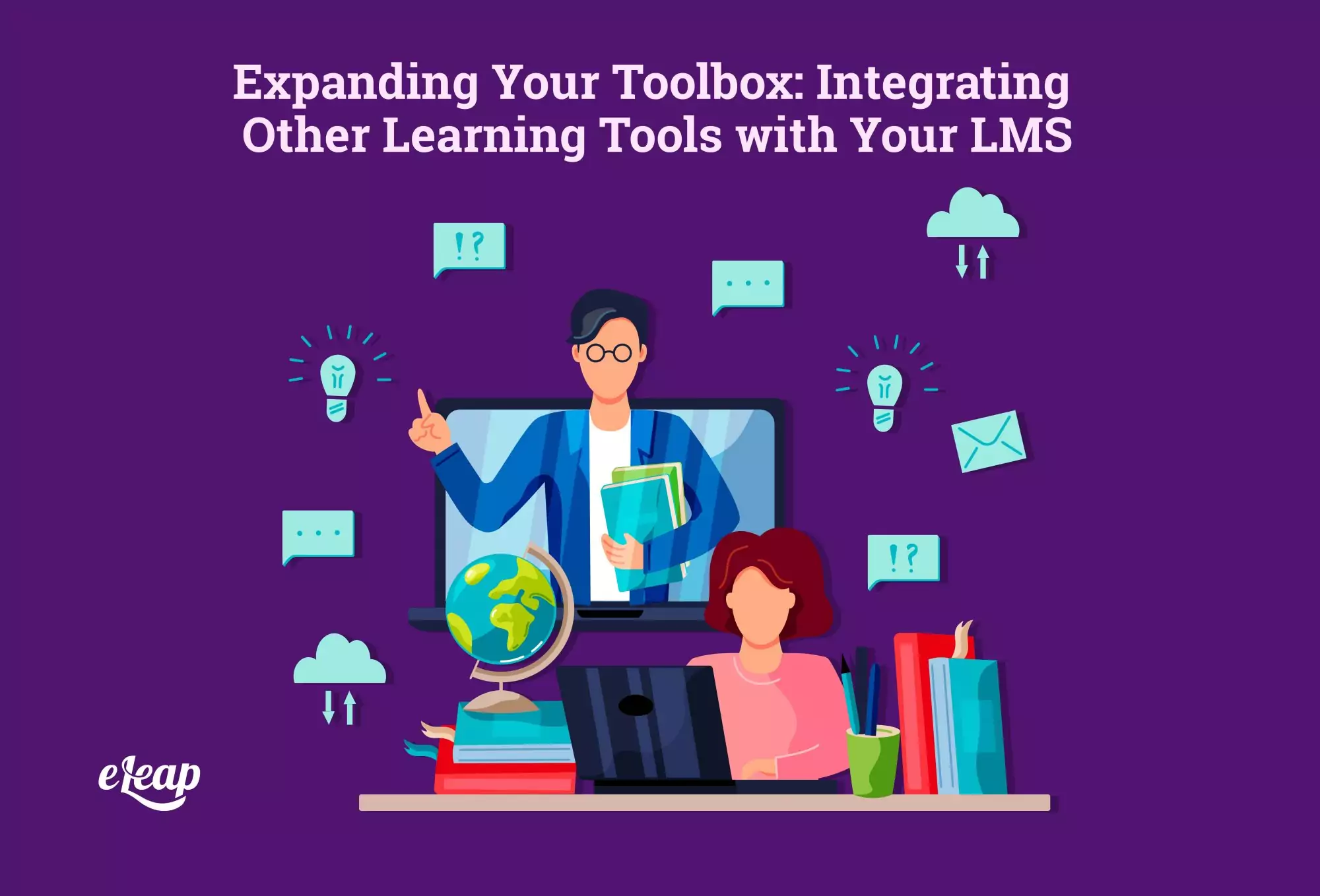Expanding Your Toolbox: Integrating Other Learning Tools with Your LMS

Some additional learning tools with LMS can make the learning experience way better. The modern learning management system (LMS), is a critical component of your learning and development initiative. It brings all your training together in one place, making it available to learners both in the office and working remotely, and provides administrators with tracking and monitoring capabilities. In many ways, it’s the single solution you need for training and development-related needs.
However, it cannot do everything. That’s where integrating other tools and initiatives comes in. The right LMS will play well with other software, helping you build in additional features, functionality, and capabilities. What integrations should you have access to, though? Which ones matter most and why?
In this article, we will explore some of the more important other learning tools your LMS should integrate with. We will also touch on why those are critical to your overall L&D success. Whether you’re looking to boost engagement, communication, or provide more training opportunities, there’s an integration for every need.

Other Learning Tools with LMS
You can integrate the following learning tools with LMS:
Single Sign-On (SSO)
A lot of attention has been paid to multi-factor authentication, and for good reason. Data security is of paramount importance today. However, you cannot neglect the fact that convoluted login systems make it inconvenient for your learners to access the system.
Let’s face it – the harder it is to log into your LMS, the more annoying it will be for your learners. Annoyance and irritation can be big drivers of disengagement, leading to a reduction in time spent in the system and reducing your training completion rate. For some companies, that might mean missing key goals. For others, it could mean failure to comply with regulations. In all cases, it’s bad news.
The solution to this challenge is to use another learning tool with LMS and that is a single sign-on system, or SSO. Single sign-on technology streamlines the login process, reduces barriers, and makes employees more likely to use your LMS. Essentially, it allows your learners to use credentials from another system to access the LMS.
For this to work, both the LMS and the other system must be connected using the right protocol, which could be JSSON, SAML 2.0, OpenID, OAuth2, and others. Note that setting up SSO functionality will mean work for your IT team, as most systems don’t come configured for this out of the box.
G Suite
G-Suit is the most common learning tool for LMS. And, chances are good that your organization uses Google tools to some extent. You may actually rely on them extensively – your email, tools like Docs and Sheets, access to Google Analytics, and so much more. G Suite integration with your LMS delivers a lot of benefits.
One of the primary things to know going in is that with G Suite integration, your employees can access the LMS the same way they do their regular Google tools and apps, such as Drive. That’s one less barrier to entry, plus it makes the process much smoother.
Integrating with the G Suite can provide many benefits. One of those is that your learners will be more likely to use the LMS. Another is that you can increase training program adoption across the entire organization. Those are benefits that any business can appreciate.
HR System
If you haven’t yet integrated your HR system with your LMS, now is the time. It helps sync employee data across both systems, provides more accurate tracking capabilities, and ensures that your HR teams always have access to critical information, such as compliance training, professional CE, and more.
Additional benefits of integrating your HR system with the LMS include streamlining your onboarding process. Chances are good that new hires must complete training – integrating the two systems helps remove barriers and improve accuracy, resulting in not just better control and visibility for HR, but a better overall experience for new employees. Integration also helps ensure information accuracy, reduces discrepancies between training records in the system and those HR has, and even saves your administrators a lot of valuable time.
Your CRM
Whether you use Salesforce, HubSpot, or something entirely different, your CRM is a critical component in business success. Connecting it with your LMS makes a great deal of sense. This is particularly true when it comes to tracking customer interactions, service, and overall experience, and then assigning customer service-related training to your employees.
Another reason to consider integrating your LMS with your CRM is that it provides access to learning-related information within the CRM dashboard. Imagine being able to log into Salesforce and see information about customer service training, such as enrollment, progress, and completion, without having to jump to another platform. This helps streamline the process for CRM admins, as well.
Note that not all CRMs play well with all LMSs. The most widely adopted CRMs like Salesforce are the most likely to integrate with your learning management system. However, that doesn’t mean that smaller CRMs will not. Work with your LMS provider to determine if your CRM can integrate.
Webinar Tools
In today’s remote world, digital tools have taken the place of in-person meetings. Make sure that your LMS provides learners with the ability to easily access those tools. Which ones should you consider? It really comes down to which ones you use in your organization, but some of the options today include the ever-popular Zoom, as well as GoToMeeting. You may prefer Adobe Connect, Microsoft Teams, or any number of other options, too.
Integrating these learning tools with LMS reduces the amount of work necessary to connect learners with training providers. It also makes it simpler to schedule sessions, track and register webinar attendees, and a lot more. As a bonus, most of these tools can also double as team meeting tools, ensuring that you get more use out of a familiar system.
So Many Other Options
We have touched on some of the most important integrations for your LMS, but there are so many other learning tools for LMS to be integrated with. You’ll find e-commerce integrations, webhooks integrations, Google Analytics and social media integrations, and more. The trick is to know what each offers, whether it brings value to your learners and whether it works with your learning management system.
To learn more, go here.